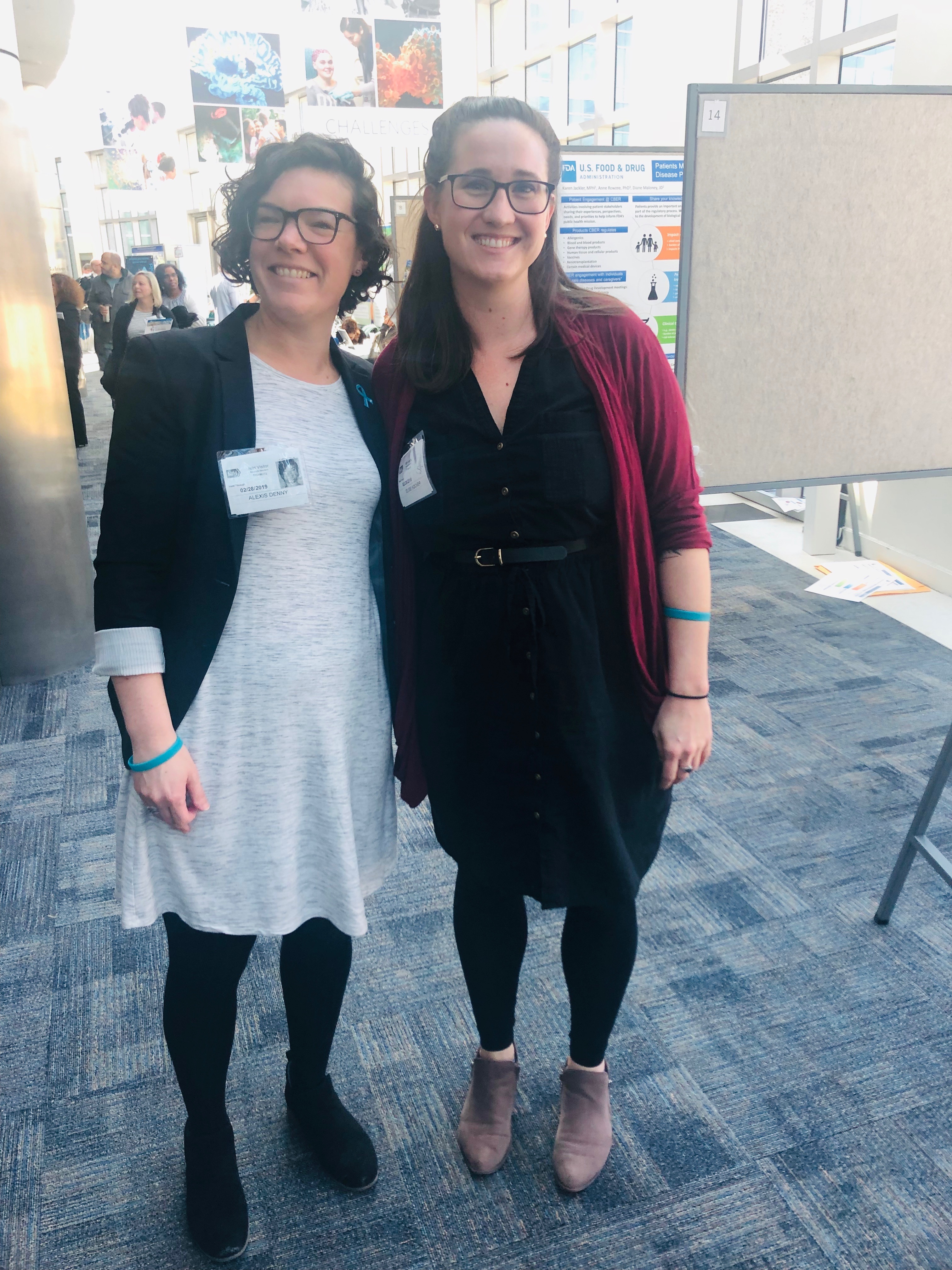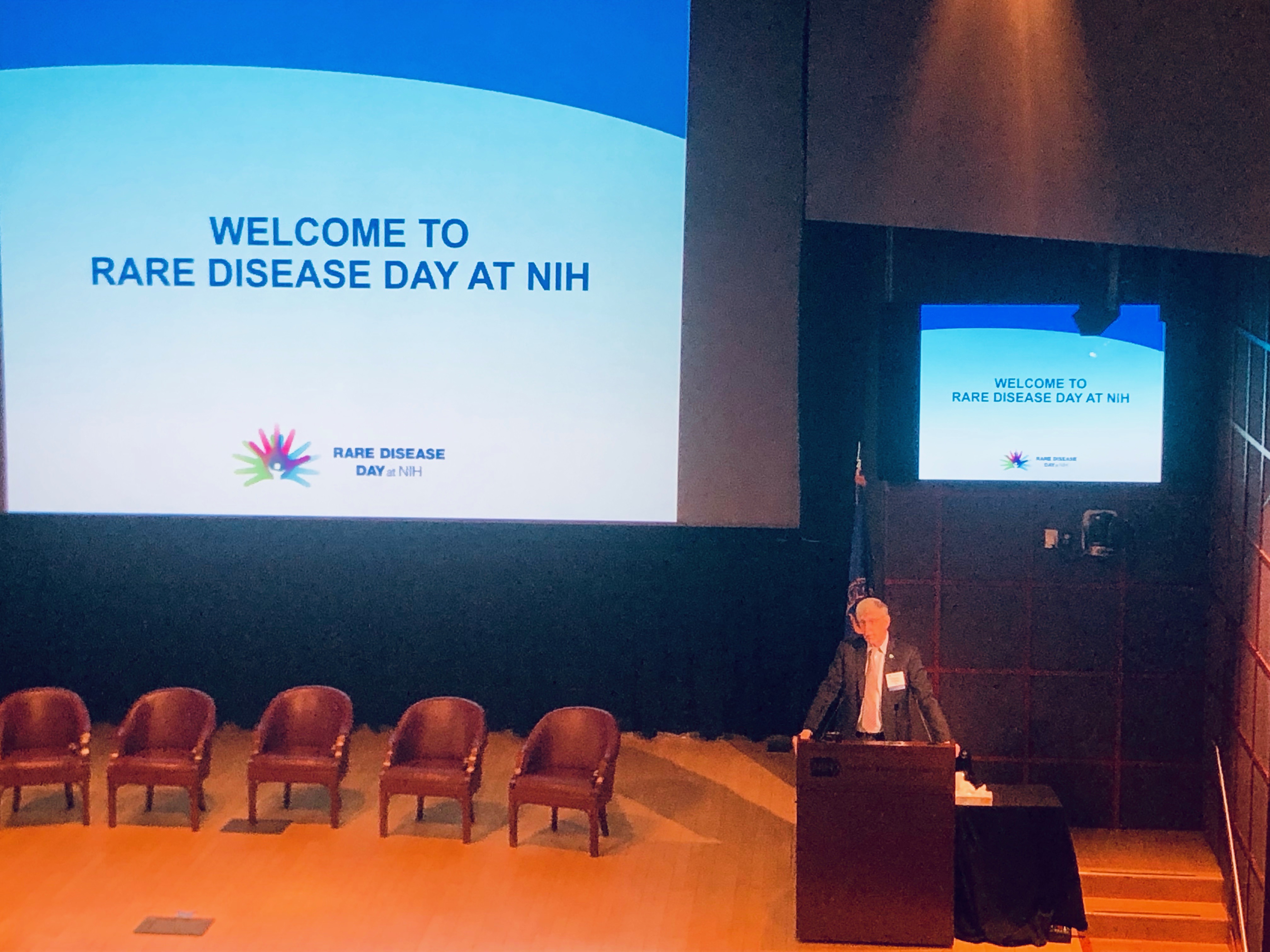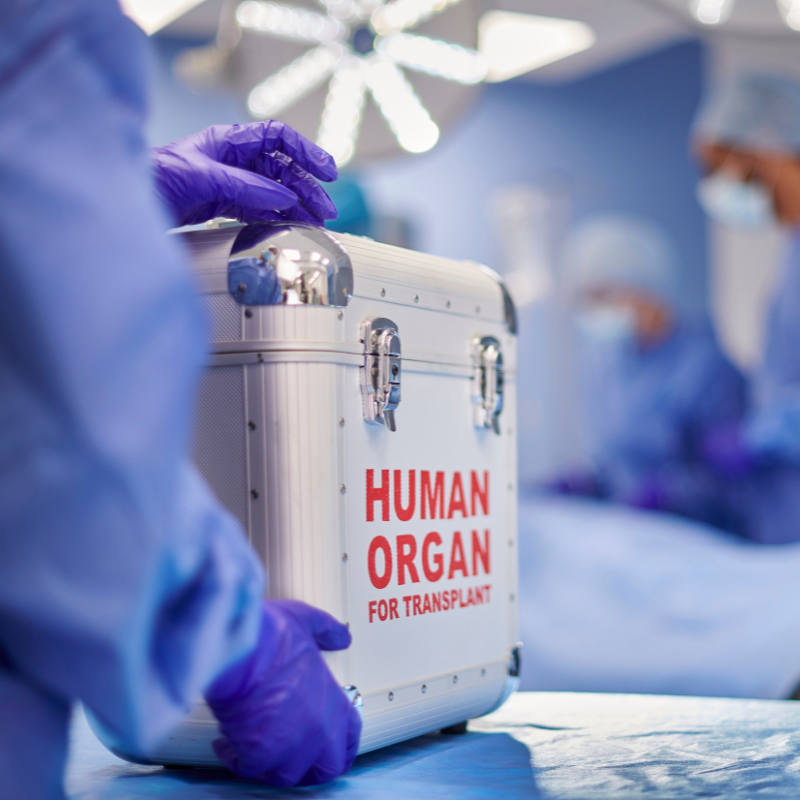
Alexis Denny, PKDF Director of Government Affairs (left) with Elise Hoover, PKDF Director of Research
This past week, 450 rare disease advocates and patients descended on Washington, D.C., for Rare Disease Week, and I was glad to be amongst them. It was a packed agenda with four days of activities and awareness opportunities and I’d like to share the highlights:
Monday was spent with the Everylife Foundation’s Rare Disease Legislative Advocates conference, learning about their legislative priorities for the year. Among these priorities were increased funding for the National Institutes of Health (NIH) and the US Food and Drug Administration (FDA). I was glad to hear about these initiatives since they align with key priorities for the PKD Foundation.

Alexis (right), with staff from Sen. Josh Hawley’s office
Tuesday, we took to the Hill to spread the message of how important it is to protect and support those affected by rare diseases to as many members of Congress as possible. I visited several representatives’ offices, including those of Rep. Lacy Clay, Rep. Emanuel Cleaver, Rep. Jason Smith and Senator Josh Hawley. All of their offices listened intently to our stories and were receptive to our various asks, especially the need for increased medical research funding.
Wednesday brought the official Rare Disease Caucus Briefing—a chance for rare disease advocates to educate Congressional staffers about rare disease. The turnout was great with about 200 people present and ready to learn. We heard from two of the Caucus Co-Chairs, G.K. Butterfield and Amy Klobuchar, as well as various government agencies and rare disease advocates. They covered various topics, like challenges for caregivers of people with rare diseases, tools and techniques for diagnosing rare disease, and how the NIH and FDA are fighting rare diseases.

NIH Director, Francis Collins, M.D., Ph.D., giving his opening address
On Thursday, we gathered at the NIH for Rare Disease Day. A day of presentations, conversation and celebration of recent advances in rare disease therapy development helped everyone end the week on a high note. NIH Director Francis Collins, M.D., Ph.D., gave a memorable talk about how far we’ve come, but also have far we still have to go in developing treatments and cures for rare and common diseases, and the NIH is committed to the cause. It’s wonderful to see that they are in the same frame of mind as we are at the PKD Foundation.
Events like these always remind me how powerful we can be when we raise our voices together. Seeing so many people, both advocates and legislators, involved in the week’s activities shows that we are being heard, and that we have the momentum to make change.
If you’d like to get involved in advocacy with the PKD Foundation, sign up for our advocacy alert emails!









Thanks for all of your hard work, Alexis!
MY TWIN SISTER AND I WERE DIAGNOSED WITH ADPKD , WHEN WE WERE SMALL MY FATHER HAD GOT SHINGLES AT A YOUNG AGE, AND MY MOTHER DEVELOPED CHICKEN POX WHEN WE WERE BORN,AND MY FATHER ALSO HAD A HEART CONDITION A HOLE IN SHIS HEART. aNY HOW MY TWIN SISTER AND I NEVER EVER HAD A CHICKEN POX SHOT NOR DID MY PARENTS. wE LIVED WITH CRONIC STABING KNIFE LIKE STABING PAIN IN OUR KKIDNEYS, LIKE BROKEN GLASS SHARP..aNY HOW WE GOT THIS SO CALLED SHINGREX SHOT, AFTER WE GOT IT, THE STABBING PAIN WENT AWAY AND WE HAVE NOT HAD ANOTHER TEST YET ON OUR KIDNEYS , BUT WE DO FEEL IT HAS A CONNECTION TO THIS VIRUS,sINCE MY MOTHER HAD IT WHILE WE WERE FORMING IT AFFECTED OUR KIDNEYS, THIS VIRUS, AND THIS IS WHY NOT EVERYONE HAD IT IN THE FAMILY , WE DO NOT THINK IT IS GENETIS, ONLY THAT IT IS GENETIC THROUGH BIRTH OF AN AFFECTED MOTHER. wE STRONGLY RECOMMENT ALL OF THE dpkd patenients get the shot to take the pain away, we are tired now but, now can relax without any pain at all in our kidneys ,we are 53 years old, and noticed the difference almost immediately after the shot, it is something to be noted, since nothing else ever worked, only infection pills given, and ultrasounds were they showed me the cysts in the Yorkton sask hospital, but after this cold winter, my twin and I are going to get another ultrasound since the swelling is now going down as well.